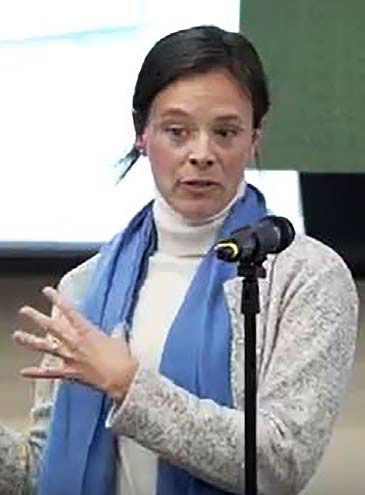Brice Wallace
Hear “growth in Utah” and Utah County might be the first area to come to mind. Don’t expect that to change anytime soon.
Utah County likely will remain the second-largest county by population with scenarios for growth ranging from 1 million to 1.6 million by the year 2060. Meanwhile, employment is projected to reach over 720,000 by that year.
“In the economic side of things, we anticipate significant{mprestriction ids="1,3"} job growth and industry growth in Utah County,” Mallory Bateman, director of demographic research at the Kem C. Gardner Policy Institute, told a crowd at a recent membership meeting of the Utah Valley Chamber of Commerce.
“Obviously, this is a place that has a lot going on. It attracts a lot of people and it will continue to attract new industries. … It’s a dynamic space in this economic picture.”
Former Utah Gov. Gary Herbert, now the chamber’s executive chair, said Utah has “such a hot economy, and the center of economic expansion really is right here, happening in Utah Valley.”
Bateman said the Wasatch Front will continue to be Utah’s growth center but Utah County has characteristics that put it out front. Among them are plentiful job opportunities that have made it a magnet for in-migration.
“Young people are attracted to places with employment opportunities, with educational opportunities, and they leave areas that maybe don’t have as many of those and move to our more-urban areas, and obviously Utah County has a lot of those drivers here that would bring young adults,” Bateman said.
Economically, she said, “there’s a lot going on.”
“There’s a lot of industry happen down here. There’s a lot of tech. There’s a lot of interesting dynamics. Big buildings popping up everywhere are good indicators that there’s clearly a lot of economic opportunity.”
Utah County also has space to grow, relative to other urban areas of the state, she said.
“You still have a lot of areas that could be developed, could have houses or new communities could develop. … I think that is something that’s a little different than other parts of the Wasatch Front. Salt Lake, Davis and Weber are starting to get pretty tight with available space for communities to grow.”
Opportunities aren’t confined to employment and space, however, as Utah County provides plenty of options for educational pathways, she added.
“If you are in, you know, Millard County, you don’t maybe have the opportunities to pursue the multitude of degrees that you do up here. … There’s some great institutes of higher learning down here that bring people in and they want to stay and they build their lives here,” Bateman said.
Many people are building their lives in Utah County, with growth in the northern part of that county and the southern part of Salt Lake County featuring the fastest-growing cities in the state from 2010 to 2020. Utah County led statewide population growth from 2020 to 2021 and also from 2021 to 2022. Eagle Mountain, Saratoga Springs and Lehi added the most new residents, and Saratoga Springs, Eagle Mountain and Santaquin grew the fastest.
Utah County’s total employment is expected to balloon from 375,000 in 2020 to over 720,000 by 2060. Most of the job growth — 44 percent — is expected to occur in construction; healthcare and social assistance; and professional, scientific and technical services.
“In the growth areas, it turns out construction is a hot field because you have to keep building for those [new] folks,” Bateman said.
Herbert said Utah has America’s most-fertile environment for business and consequently the most healthy, diverse economy in the nation. The Silicon Slopes area has led the way, with the highest percentage of private-sector growth in the U.S., he said.
“We became what was called the epicenter of small-business growth and development in the nation here in Utah because we have a very fertile “soil” and environment conducive to those entrepreneurs throwing their seeds down, watering it, fertilizing it and weeding it and they grow a business, and that’s been the secret of Utah’s success and will continue to be the secret of Utah’s success,” Herbert said.
The former governor commended the private sector for the state’s economic might.
“So, all you businesspeople are doing some great things throughout the state, and to see this kind of expansion, which is just unprecedented, is really remarkable,” he told the crowd, “and there’s no reason why that can’t continue to go on for another decade or generation.”{/mprestriction}








